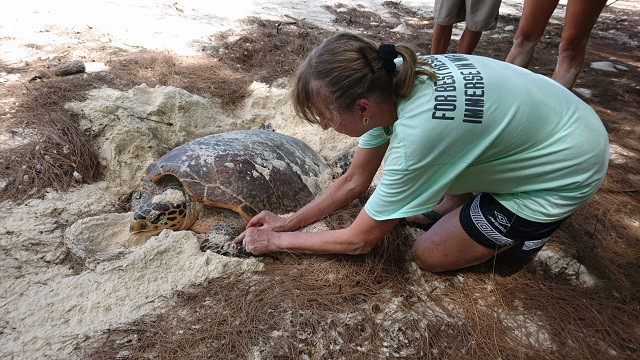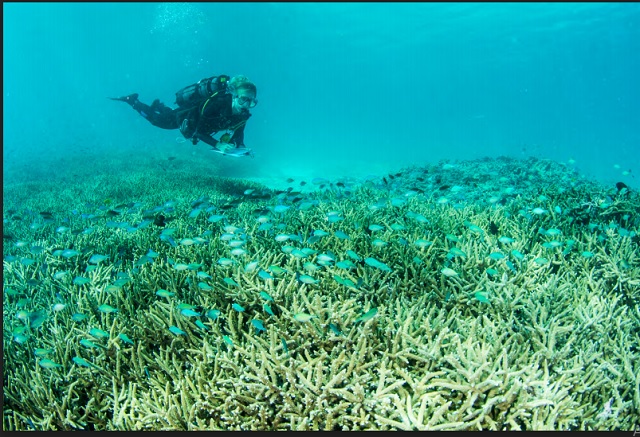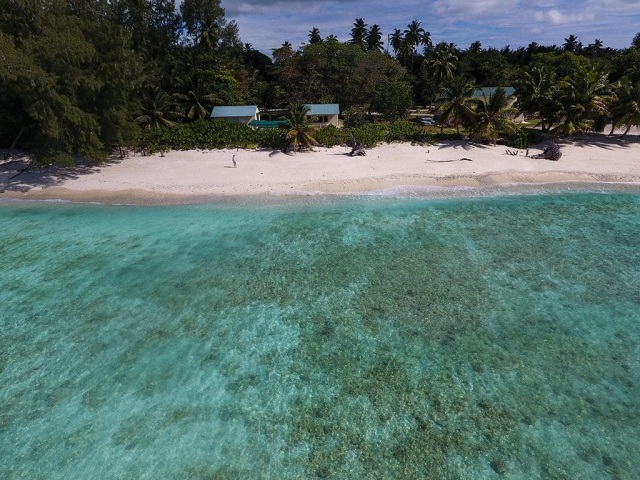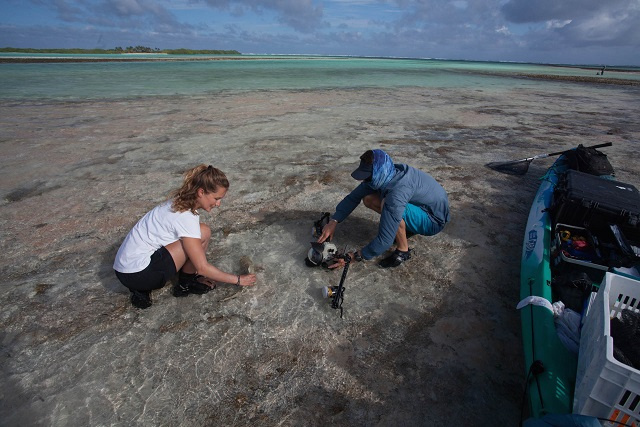7 ways Save Our Seas is investigating nature in Seychelles
(Seychelles News Agency) - Seychelles' rich biodiversity is a goldmine of information for research and conversation organisations. Save Our Seas Foundation, which was founded in 2003 in Geneva, Switzerland, is running seven long term programmes on two remote islands in Seychelles -- D'Arros and St Joseph Atoll.
SNA takes a closer look at Save Our Seas' goals, findings and achievements.
Community monitoring of nesting sea turtles
The beaches surrounding D'Arros Island and St Joseph Atoll are important nesting sites for green and hawksbill turtles. The two islands are also two of the only places in Seychelles where both species nest and forage.
Jeanne Mortimer, the project leader, is working closely with Seychellois monitors on how to observe nesting turtles and collect data. Ongoing since 2011, the key objective of the project is to promote and better understand the nesting of sea turtles in this area.
 |
| (Save Our Seas Foundation) Photo License: All Rights Reserved |
Growth rate and population size of resident juvenile hawksbill and green turtles
The presence of green and hawksbill turtles are monitored across the islands regularly. The research centre collects data that tells a story about the numbers of the species using the islands and how much time they spend there as well as how quickly they are growing.
 |
| (Ryan Daly, Save Our Seas Foundation) Photo License: All Rights Reserved |
Regular surveys of coral reef abundance, diversity and health
Every year the coral reefs around the two islands are surveyed to assess the trends in their health. Data are collected from different sites around the islands.
Once collected the data are compared to the previous year's findings which gives an indication about the status of the reefs and how it is changing and this is done by the team at the D'Arros Research Centre.
 |
| Ryan Daly, Emily Gadoutsis/Save Our Seas Foundation) Photo License: All Rights Reserved |
Regular surveys of local fish abundance and diversity
As with the coral reefs, the fish communities that frequent D'Arros and St Joseph are regularly monitored. The team from the island's research centre looks at the fish species and how many of them are living in which habitats around the islands.
The diversity and abundance of some reef fish are often a great indicator of ecosystem status.
 |
| (Ryan Daly/Save Our Seas Foundation) Photo License: All Rights Reserved |
Population structure, residency and behaviour of reef mantas around D'Arros Island and St Joseph Atoll
According to research, D'Arros is an incredibly important place for reef manta rays. The centre together with the Manta Trust are able to identify individual mantas by their unique markings, and this gives the opportunity to regularly record which individuals are using the site, when they are here and how often.
Such information allows researchers to learn about the species' populations and their requirements from the D'Arros site.
 |
| (Save Our Seas Foundation) Photo License: All Rights Reserved |
Collection of long-term environmental data
For much of the research of the Save Our Seas Foundation, it is of utmost importance to have information on the long-term environmental conditions.
The Foundation is constantly monitoring the winds and rainfall at the weather station of the research centre. A series of underwater sensors are deployed around the islands, giving information on water temperatures, tides and light intensity.
All of this data feeds into the foundation's other projects.
 |
| (Ryan Daly, Save Our Seas Foundation) Photo License: All Rights Reserved |
Acoustic telemetry
Across D'Arros Island, the St Joseph Atoll and the broader region the Foundation has an array of stationary acoustic receivers constantly recording information on the presence of individual animals that have been tagged with acoustic transmitters.
When a tagged animal moves within range of the receiver, a timestamp is recorded. Together as a network, these receivers provide information about the movements and distributions of different animals across different scales in space and time.
 |
| (C.Daly, C. Elston/ Save Our Seas Foundation) Photo License: All Rights Reserved |






